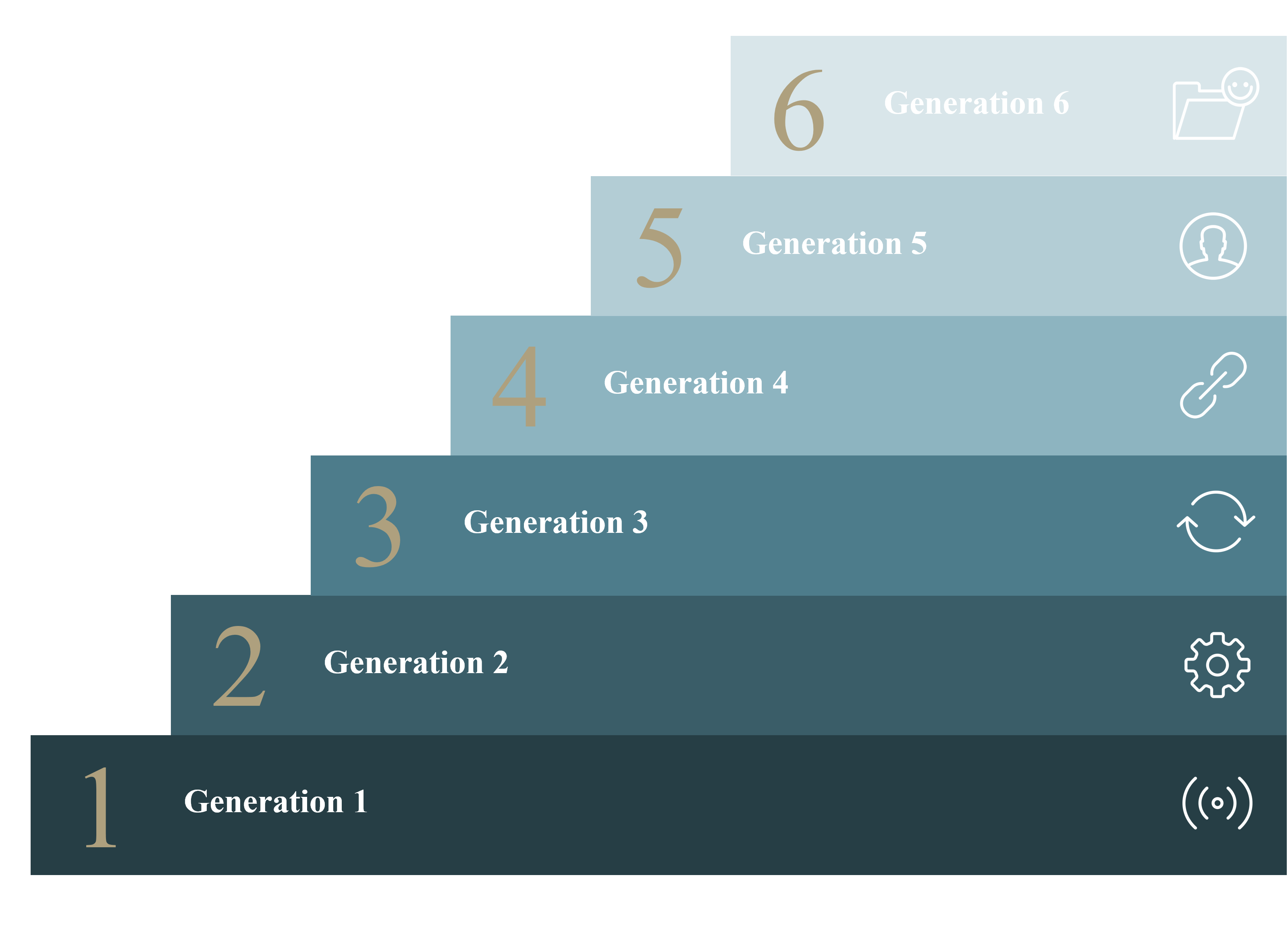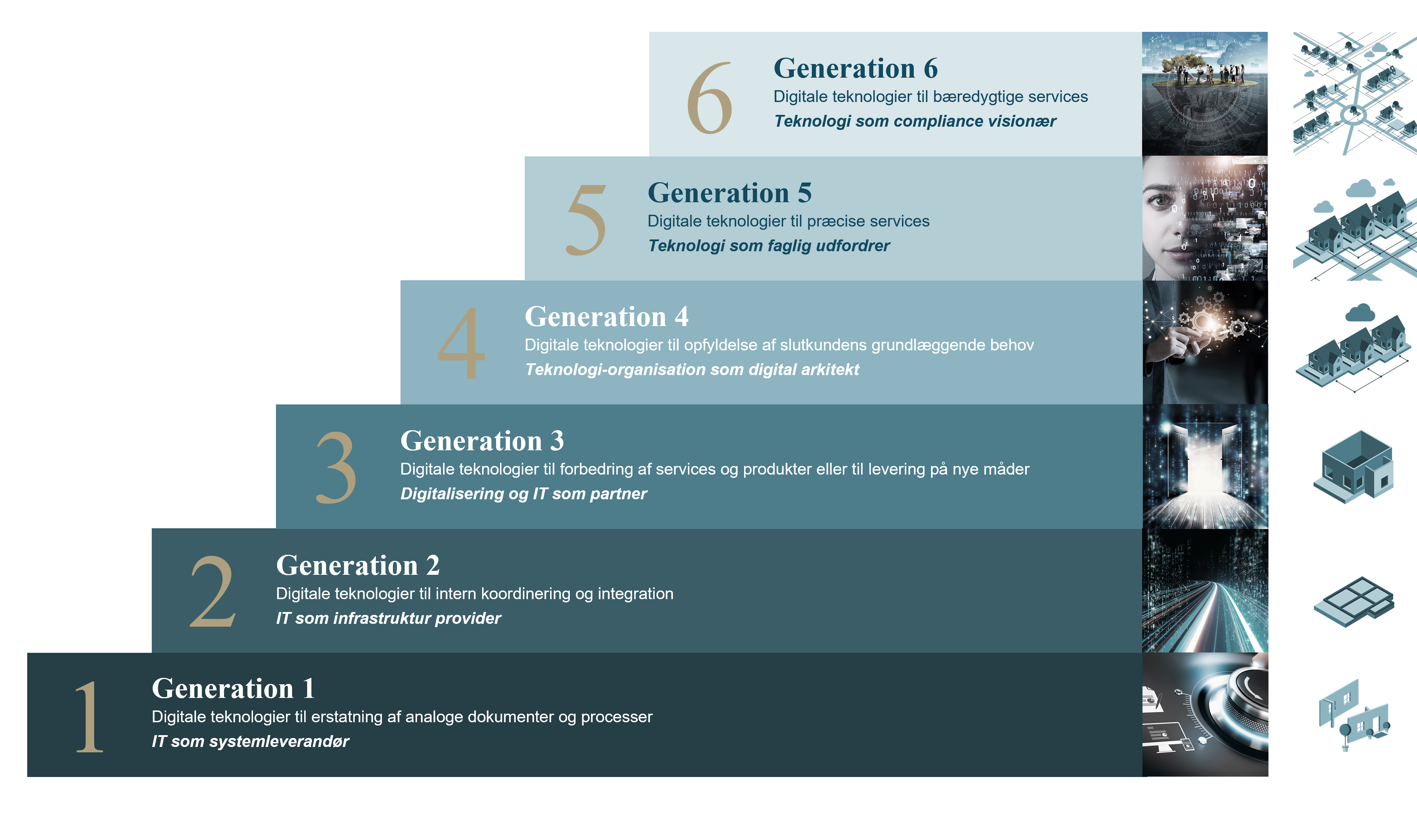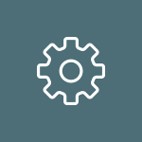
As we approach the summer holidays, it's a good time to reflect on the first half of 2024. And what a half year, first of all my new book "MIND the GAP - Digital maturation, your leadership responsibility" has been published in both Danish and Norwegian by Djøf forlag and Cappelen Damm respectively, and my two previous books "Digital Maturity" and "Digital Transformation" in Chinese by Shanghai Scientific & Technical Publishers. It will be exciting to see how these books are received. Here at DI2X, we have been working hard to get our self-assessment Tools updated with generation 6 and new capabilities, and we have developed a brand-new tool for mapping leaders' digital mindset - you can hear more about this in the next newsletter in August.
But it has also been a half-year where Generation 6 of digital maturity, or the 6th step on the generation staircase, has really seen the light of day, and I have started to include it in my lectures and our Masterclass. It has been exciting to discuss it and get feedback, and fortunately, it has confirmed to me that it has its justification and emerging relevance.
Therefore, in this column, which will be somewhat longer than my columns usually are, I will spend some space on presenting generation 6. I do this by taking excerpts from my new book. But before that, a brief introduction to the Digital Maturity framework.
When I visit companies or give courses and lectures to leaders in private companies or public organizations, it is now clear to them that they need to be able to adapt to a digital reality. Their reality is changing rapidly, tasks are becoming more complex, there are new demands and expectations from customers, employees and partners, not to mention society in general. This is nothing new - the landscape has always changed - but the speed and complexity make it necessary to approach change differently than before, and it is largely technological development that determines the rhythm and topography of the landscape.
They may be at different points in their digital maturity, but they have understood the message and the need to digitally mature their organizations.
The digital evolution, or maturation if you will, can be understood as several generations of digital maturity, as you see in the figure below.

Digital maturity is illustrated as a generational staircase. This is because digital maturity is a gradual process where each new step builds on the previous one. At the bottom step, which I call Generation 1 - it could also have been called Development Stage 1 - it's mostly about powering workflows and paper. At the top step, Generation 6, organizations and companies are working to develop and offer transparent and traceable products and services to end customers and business partners.
An organization that has made it all the way to Generation 6 and has the organizational capabilities that this interim top step requires - very few do - will still need the capabilities and some of the thinking and management practices of Generation 1 and 2 and 3 and 4 and 5. But the digital mindset will be different.
In the following, each of the generations will be briefly presented to give you an understanding of the generations and then present Generation 6 in more detail than the others.

Generation 1 asks the question; How do we support our existing practices with digital solutions? It's about saving money and resources. The focus is on saving money and resources by digitizing analog documents and manual processes and by letting customers and citizens serve themselves. To this end, individual departments are introducing their own local digital solutions. The lack of data sharing and coordination means frequent errors and lack of overview, as well as an insufficient basis for decision-making.

In Generation 2, the question is: How do we improve what we already do - how do we implement new standardized processes and systems? Processes and systems, and thus the work of the entire company or organization, must be more efficient, better coordinated and integrated. Local solutions are replaced with centralized systems that handle core processes across the entire company. At the same time, it provides the opportunity to take internal data and use it to create an overview of activities and processes to see where the organization can become more efficient. Managers are given greater responsibility for IT systems and data and how to implement the core systems to realize the expected benefits.
In the first generations, both technology and strategy are about automating and streamlining internally and externally. At first, the goal is savings, then standardization and efficiency. Digital is a tool to optimize the existing, and the strategy in relation to technology is first and foremost to reap the resource benefits of saving and streamlining. It's not about using technology to drive the company's development of new products and services, new business models or new skills, as it is in the more mature generations.

Generation 3 asks the question: How do we engage customers and digital technologies to solve familiar problems in new ways? Technology is now being used to develop new products and services for customers or deliver solutions in a better way. There will be a need to develop a digital mindset and an awareness of the transformative potential of technologies and the need to mature strategy, organization and leadership. The focus will increasingly be on the customer experience and perspective and the organization will start to think outside-in. At the same time, technologies are invited into your development space and used curiously to develop new solutions. Leaders will need to develop new competencies to focus on and also measure the progress of digital maturation and be mindful of making the transformative changes meaningful to employees.

Generation 4 asks the question; What should our future business model look like if customers are to be offered coherent services and products? The goal is to fulfill the underlying needs of the end-customer in a coherent way together with others. A longer horizon is needed with a strategic emphasis on visions rather than strategies. This raises questions like; what will we be doing for a living in 10 years? And what do we need to be really good at, and what do others we work with need to be really good at? The focal point for the development of products, processes and services is what creates value for the end-customer. To create that value, we need to collaborate in ecosystems of equal partners who create and share value together. This makes data quality and secure data processing business-critical, while data itself gains business value. Leaders take on a driving role in driving innovative business models and fostering strategically important external collaborations in the ecosystem.

Generation 5 asks the question: How do we offer personalized and proactive services that prevent problems and create attractive workplaces? In this generation, technology and professionalism merge, as technology and especially data strengthen employees' ability to create proactive and personalized solutions for end-customers. This means new competencies and a need to rethink the job framework. Data is the driving force behind both innovation and decisions. That's why it's crucial to have control over data and decide what data should and shouldn't be used for. At the same time, cybersecurity is becoming business critical. A lack of security is not only costly in terms of lost production and reputation. It can also be difficult to restore credibility in relation to customers' and partners' data afterwards, and thus take the business forward. As a leader, it's important to be clear about the purpose of the technologies the company uses and ensure that employees and the organization understand both the opportunities and limitations.

Generation 6 asks the question; "How do we ensure traceable and transparent services and products, customer data ownership and our own timeliness in relation to and towards selected eco-communities, the ecosystems and value chains we have and are part of and the surrounding society?". The company's services remain personalized and proactive, while ensuring that the customer can own their own data. There will be a focus on propriety, including ensuring transparency and traceability in everything the company does. The customers' ownership of their own data is made possible with the help of decentralized data wallets and blockchain, and it is also made possible for customers to decide which and how much data they want to be included in the service they receive and the underlying advanced data processing. Collaboration is characterized not only by ecosystems, but also by working in smaller eco-communities with a common goal and values that go beyond economic benefits. At the same time, this generation is focused on managing multiple bottom lines, including ESG reporting, and ensuring compliance with not only existing requirements and external expectations, but also future ones. Leaders need to understand and use sustainability and decency as a strategic driver and business differentiator.
This is the very short version of generation 6, so let me elaborate by bringing you the introduction and conclusion of the book's chapter on generation 6.
"When was the last time you read through what you're agreeing to when you update different apps and programs? If you're like me, you've just hit "accept" and been a bit annoyed if it's been one of those cases where you have to scroll through a lot of very small print.
The reality is that despite GDPR legislation and other regulations, most of us rarely have the faintest idea what our data is used for. We've lived with it - but some of us are becoming increasingly concerned. At the same time, it's clear that tech giants like Google, Apple, Meta, Amazon, etc. have such a huge influence on our lives and everyday life that it's unsustainable in the long run. Many people are less and less interested in being offered proactive services if it is not transparent to them why they are being offered them. And where does the data come from? Is it voice data from a conversation we had over the kitchen table, is it because they know that my mother has liked the trip to Crete on her social profiles? We are currently in the internet era known as Web 2.0. Web 1.0 was the infancy of the internet, from approximately 1991 to 2004. This era is also known as the "Static Internet". You couldn't do much on it. It was largely one-way communication that users could navigate, but interactions were rarely part of the package. You could call or send an email if you wanted something. Our current Web 2.0, which we could call "The Social Internet", emerged in the mid-2000s and especially took off with social media like Facebook and Twitter. In this era, the internet is social. We can share opinions, content, photos and much more in real time and thanks to smartphones, we carry the internet in our pockets. But social platforms are dominated by a few players and how they use our data is unclear, but we know that social media has been used to influence elections through data manipulation.
Best known is the Cambridge Analytica scandal, which came to light in 2018. The British consulting firm had collected personal information from millions of Facebook users' profiles without their consent. The company used the data to develop and target political campaigns, including during the 2016 US presidential election and the Brexit vote in the UK. Elon Musk's takeover of Twitter, now X, has further demonstrated how much influence a single company - or billionaire - can have and how opaque the criteria for content and data collection are.
The problems of Web 2.0 have led to a vision for a Web 3.0 that we could call "The Democratic Internet". It focuses on creating a decentralized, open and user-driven internet - everything that was the original vision for the web. The main idea here is to give users greater control over their data, improve security and access to the internet through decentralization, and enable online permanence with new technologies like blockchain and AI. The goal is to create a more inclusive and transparent internet where value and influence is shared among all users instead of ending up making a few large tech companies extremely powerful and rich.
In Generation 6, it's Web 3.0 you're looking into. Democratic, decentralized and transparent is the focal point, and at the same time there is a focus on sustainability in the broadest sense. This means that it's not just about green transition, but about being socially responsible in terms of data, equality, health, education, working conditions etc.
In Generation 6, you will still work in ecosystems, but you will also start working in what I call eco-communities: smaller but strong communities where you join forces to change society based on shared values. Professor at Copenhagen Business School Carsten Sørensen has called them a new cooperative movement, and that's pretty accurate. Like the original cooperative movements, they are driven by a desire to be part of a positive change. It's not just about economics and there is a focus on equality and reciprocity.
An example could be a local neighborhood that decides to create their own local energy grid and become locally self-sufficient in green energy. This is technologically feasible today, but it poses some problems when it comes to public administration and authorities. An ecocommunity differs from an ecosystem in a number of ways, for example, ecosystems are dynamic and constantly changing as a result of technological innovation, changes in the market, political decisions and many other factors, whereas ecocommunities can be more stable as they are bound together by shared values or goals that can withstand external changes.
Now you can be digitalized without being sustainable, just as you can be sustainable without being digitally mature. Whether you're Generation 1 or Generation 6, you have to deal with climate emissions, water consumption, employee well-being, child labor, GDPR, etc. But in Generation 6, strategy, sustainability and digital maturity will be connected, because this generation's focus on orderliness places new demands on transparency, traceability, credibility and data rights that can only be met with the help of technology.
The financial bottom line is obviously still important in Generation 6, but it's becoming more means than end. As a top leader, you are tasked with leading against the new types of bottom lines. Some are fully tangible. With ESG - Environment, Social, Governance - corporate social responsibility has become tough business that requires good numbers. The EU Green Deal, focus on diversity in gender, ethnicity, age and attitudes, data ethics... these are all aspects of business that you need to have a policy and goals for and are expected to take seriously. You may already have diversity and inclusion policies internally. Now you need to be able to show and document that you mean them. Even in the upper echelons of the company.
At Google, the mantra in 2004 was "Do no evil". That's far from good enough today. The demand and expectation is that you must be part of the solution to society's problems, and therefore it must be a strategic focus how you make sustainability an advantage and driving force in the development of new solutions. Thinking of it as compliance alone is expensive because you get all the disadvantages without many of the advantages.
It's up to you to communicate these strong values clearly throughout the organization so that you have a common direction, even if the organization becomes much more decentralized as described earlier. It's also about having a strong profile in relation to the eco-communities you want to be a part of, which it is also your responsibility to prioritize and select. Trust is essential for this type of collaboration, and your values and how you act in relation to them play a key role. You will be measured on transparency and credibility and your ability to engage in mutually binding and equal collaborations where you can listen and learn as well as teach.
Managers must continue to be aware that employees' professionalism is strengthened by the technological possibilities, but they also have a task in ensuring that employees understand and can work in eco-communities and that there is mutual respect throughout the organization for different skills and attitudes both internally and externally.
Data security and data ethics, where data becomes the owners' own, places new demands on the company's ability to develop solutions that users find valuable enough to share data.
I hope that this column has given you a little more insight and understanding of generation 6, and that what you've just read has given you some food for thought about your own organization's digital maturity. But it has also given you reflections on your own leadership and what you can or should work on going forward when you return from vacation. And if you're curious for more, you will definitely enjoy the book, MIND the GAP 😊
Have a great summer.